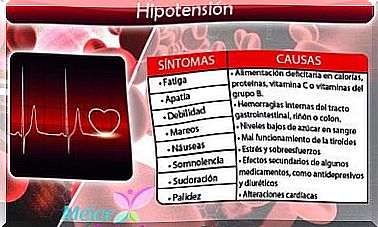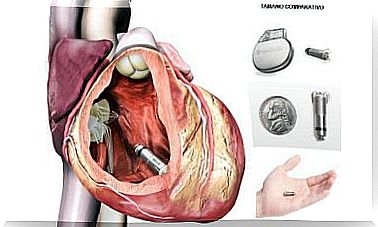Atrial Fibrillation Can Also Occur In Athletes
Did you know that, even if you play sports and have no obvious symptoms, you could develop atrial fibrillation when exercising? Find out what it is about and if its prevention is possible.

Sport is an activity that demands an effort on the part of the whole organism, and not just the muscles. Anyone who has ever exercised knows the sensation of increased heart rate, body temperature, and breathing. At these times, an event called atrial fibrillation can also occur. Do you know him?
Atrial fibrillation is a disturbance of the rhythm of the heart. It is also called arrhythmia; in fact, it is a very common type of arrhythmia.
During atrial fibrillation, the two upper chambers of the heart – atria – beat irregularly, without coordinating with the two lower chambers – ventricles. As a Mayo Clinic article explains, this is because the signals sent to the heart are chaotic and do not always reach the ventricles, but do reach the atria.
Being overweight increases the risk of different pathologies, including heart failure or the risk of heart attack. However, atrial fibrillation also occurs in physically fit people, even high-performance athletes, as a review published by JAMA Cardiology concludes .
Symptoms of atrial fibrillation
Some people with this condition have no symptoms and only find out they have it during a medical exam. However, others may experience the usual symptoms, including:
- Palpitations, that is, a fast, uncomfortable and irregular heartbeat in the chest.
- Weakness.
- Less ability to exercise.
- Breathlessness.
- Fatigue.
- Dizziness and confusion
Factors that can cause atrial fibrillation
Physical activity is important for a healthy lifestyle. According to the World Health Organization, every adult should do at least 150 minutes of moderate physical activity or 75 minutes of intense exercise a week to improve cardiovascular health, among other benefits.
In this sense, by contributing to a more efficient functioning of the entire circulatory and respiratory system, exercise can also help reduce the symptoms of heart failure, such as atrial fibrillation.
Therefore, it is appropriate to note that moderate physical activity is safe and effective for people with atrial fibrillation. However, research is conflicting regarding the effects of vigorous physical activity in people with atrial fibrillation.
Intense physical activity
It is suggested that the incidence of atrial fibrillation in aerobically trained athletes would be higher than in athletes without this type of training, especially in men. This is confirmed by a study published by the Journal of Cardiovascular Electrophysiology .
The body’s adaptations to strenuous exercise serve to increase oxygenation to the muscles during strenuous activity. However, the literature suggests that some adaptive mechanisms of the heart can lead to higher rates of atrial fibrillation, even when exerting positive effects, such as preventing heart disease.
Still, as we previously clarified, regular exercise is recommended to improve cardiovascular capacity and reduce mortality. In any case, when in doubt, consultation with the cardiologist is essential.

Atrial size
One of the factors that could predict the risk of atrial fibrillation is the size of the left atrium. This means that the stretching and tension of the atrial wall can play a role in the development of this problem in athletes. This feature could increase the risk of irregular and faster heartbeats.
Obesity has also been observed – and detailed in medical publications such as the Mayo Clinic article cited above – that obesity increases the risk of atrial fibrillation. This could be due to left atrial enlargement, chronic inflammation, or other cardiovascular risk factors.
Age
As you get older, you are also at greater risk for other conditions that increase the risk of atrial fibrillation. For example, high blood pressure, coronary artery disease, heart valve problems, or heart failure.
How to prevent atrial fibrillation
According to Johns Hopkins Medicine, the medical portal of the renowned university of the same name, not all cases of joint fibrillation can be prevented. However, it is explained that actions that reduce the risk of coronary heart disease or arterial hypertension prevent joint fibrillation associated with these causes.
With this in mind, here are some steps you can take to prevent atrial fibrillation and other heart conditions:
- Eat a heart-healthy diet based on fruits, vegetables, and whole grains.
- Eat foods low in salt, saturated fat, and trans fat.
- Get regular exercise.
- No Smoking.
- Maintain a healthy weight.
Finally, always ask your doctor before starting an exercise program, to make sure it is safe and effective for you. Specialists can also advise you on nutrition. Ultimately, all your habits will improve or worsen your cardiovascular health.









